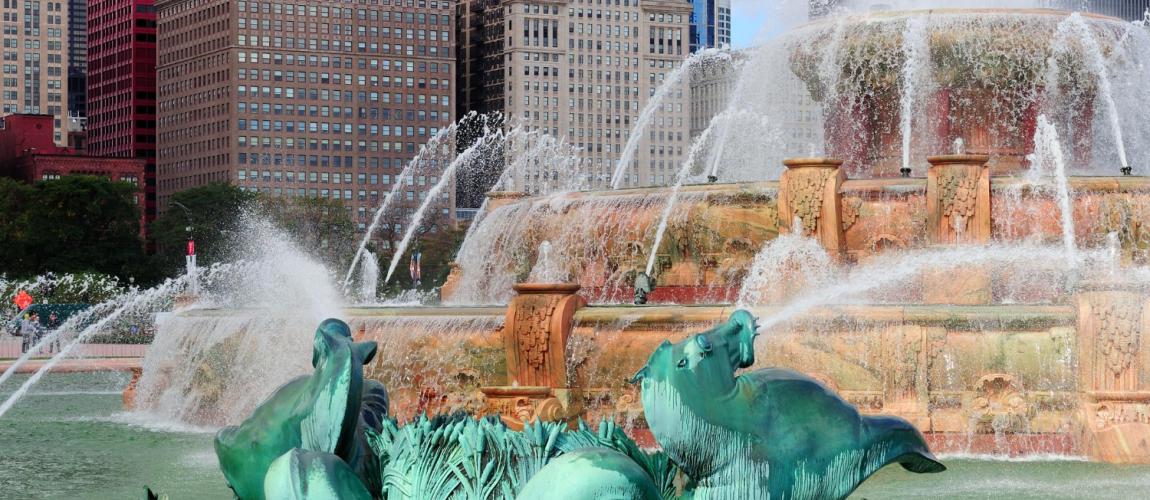Aquanova America, Saint-Dié-des-Vosges, France

Photo Credit: Image by Freepik
On this page: A case study on Aquanova America, Saint-Dié-des-Vosges, France. Find more at the Municipal Public-Private Partnership Framework - Project Summaries section for brief summaries of around 100 projects from around the world, examples of successes and challenges, as well as innovative ideas on solutions, or visit the Guidelines to Implementing Asset Recycling Transactions Section Overview and Content Outline, or download Full Version of the Report.
Project Summary: Background Saint-Dié-des-Vosges is a small city in France with a population of only about 21,000 people, the majority of whom are low-income status. In 2012, the municipality viewed the construction of a new aquatic center as a necessity to attract people and tourists to the city and help boost the local economy. Supported by strong political will and significant administrative investment, the municipality decided to build an aquatic center using a PPP. Project Structure Following a competitive dialogue process, the aquatic center project was ultimately awarded to Groupe Duval, a consortium comprising Patrimoine & Partenariats Publics as the investor, Dalkia France as the facility maintainer, and Espace Récréa as the facility operator, pursuant to a 25- year contract. Under the resulting agreement, the private consortium undertook to design, finance, construct, maintain, and operate the aquatic center. The project value is forecasted at about EUR 18.5 million (USD 21 million). Construction of the facility began in June 2012 and was completed in January 2014. The result was an aquatic center with an area of 4,800 m2 that offers multiple services, such as swimming and diving pools, massage facilities, and a fitness center, with water-saving equipment and thermodynamic dehumidification that comply with sustainable development objectives. The private partner undertook responsibility for constructing and regularly updating and maintaining the facility, subject to inspections by the municipality. Following the end of the 25-year contract term, the private partner will transfer the asset to the city. Initially, the city considered using a concession model to finance the project. After a year of consideration, however, it decided to use an availability-based contract. Under this scheme, the private partner is paid by performance-based maintenance, meaning it is paid a standard availability fee with penalties for below-standard performance. For example, the agreed maximum response time to a failure in the water treatment system is one hour. If the operator fails to rectify the negligence in time, it must pay a penalty of EUR 100 (USD 114) per hour of delay. The parties further agreed that the availability fee payable by the city would not exceed the price the city had been paying for its previous swimming pool facility. The private sector partner is also entitled to collect all revenue from aquatic center visitors, which was forecast at an estimated EUR 1.1 million (USD 1.25 million) per year. At the same time, 82 percent of the revenues generated by the project are subject to added value taxes (VAT). The VAT is expected to generate substantial revenues for the city. Lessons Learned The facility currently has 1,140 members, which is a sizeable figure for a city of only 21,000 residents. Recently, it recorded a massive spike in visitors from 19,500 in 2016 to 28,200 in 2017, aided by the establishment of a nearby campervan area nearby. The private partner has also been creative in developing fun aspects of the establishment to increase visitor numbers. This includes signing an agreement with a Belgian holiday center to promote the center as a summer vacation destination. The municipality benefitted from the project as it offers good value for money in terms of providing multiple new services at the same price as the previous swimming pool. At the same time, it has increased the attractiveness of the city. The requirement that the city does not pay an amount in excess of that paid for the previous swimming pool also incentivizes the private sector to be innovative in generating revenues from the center, which in turn benefits the municipality through its VAT.1 Footnote 1: Source(s) accessed on February 6, 2019 http://www. vosgesmatin.fr/ edition-de-saintdie/ 2016/11/20/lessucces- d-aquanovaamerica http://www.chaireeppp. org/wp-content/ uploads/2018/04/ saussier-2017.pdf http://duval360. com/wp-content/ uploads/2016/01/ NOR-PPP-Aquanova- America-Saint- Die%C2%A6%C3%BCdes- Vosges-88.indd_. pdf https://www. groupeduval.com/ cfa-nord-pppaquanova- americacentre- aqualudiqueinaugure- decembre/ https://saint-die.eu/ images/07_SPORTS_ LOISIRS/AquaNova_ America/Diaporama. pdf
This is a new section of the PPPLRC website and is currently in draft form. Your feedback is welcome: If you would like to comment on the content of this section of the website or if you have suggestions for links or materials that could be included please contact us at ppp@worldbank.org.
To find more, visit the The Municipal Public-Private Partnership Framework - Project Summaries section, the Guidelines to Implementing Asset Recycling Transactions Section Overview and Content Outline, or download Full Version of the Report.
Updated: March 9, 2024